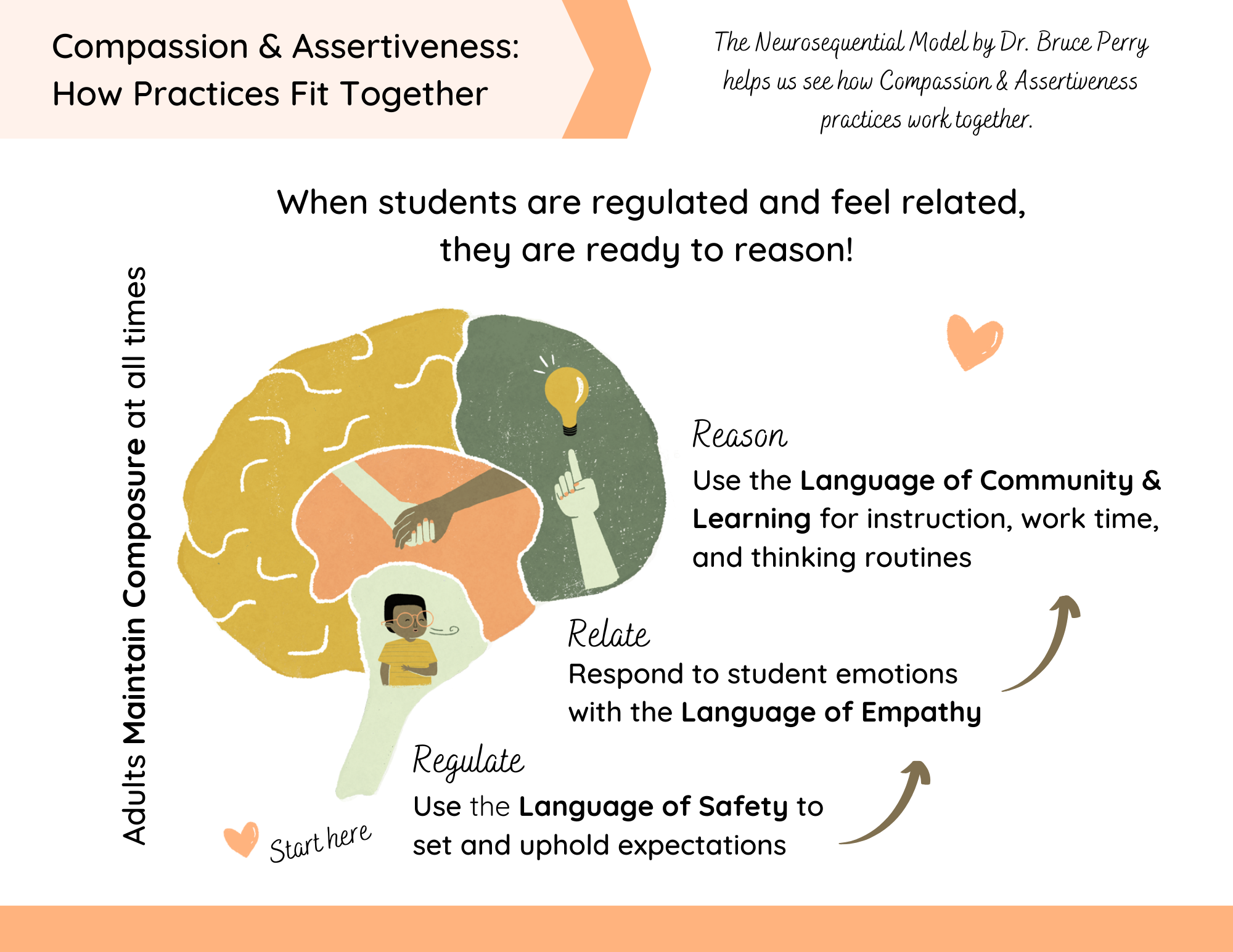Language of Safety
Using the language of safety is perhaps the most powerful part of CARE, and one of the most difficult. We use specific strategies to make sure children know what is expected and to support them in meeting those expectations. All of the strategies here rely on the teacher remaining calm and assertive.
Set Clear Expectations
This three-step sequence is the backbone of ensuring students are clear on what to do at any given point in the day and should be used any time you need to give directions to the whole class.
Signal for Attention
Teachers employ clear signals to get students’ attention, especially to mark planned and unplanned transitions. Students know clearly what response is expected for a given signal. These signals can be auditory, call and response, and/or signals with movement.
Give Clear Directions
Teachers give students intentional directions that are clear and aligned to appropriate expectations. Directions are planned in advance to ensure they are communicated in the most effective and succinct way possible. Clear directions tell students what to do, instead of what not to do. In addition, they start with a clear cue that indicates exactly when students should begin.
Notice & Name
Teachers use clear and specific narration to call attention to desired behavior, rather than highlighting what a teacher does not want to see. Noticing and naming is student centered and without judgment. Notice and name statements are simple descriptions of observable behavior: what you can see and hear, nothing more.
Uphold Expectations
Don’t wait for behaviors to get too far off track. After noticing & naming a couple of children’s behaviors, start implementing redirection strategies for children who are not yet following directions.
Why this works:
Using redirection rather than punishment gives children multiple opportunities to meet your expectations.
Cues and reminders support students’ self-regulation by allowing time and providing support for children to learn how to meet your expectations.
See the tiles to the right for examples of each strategy.







